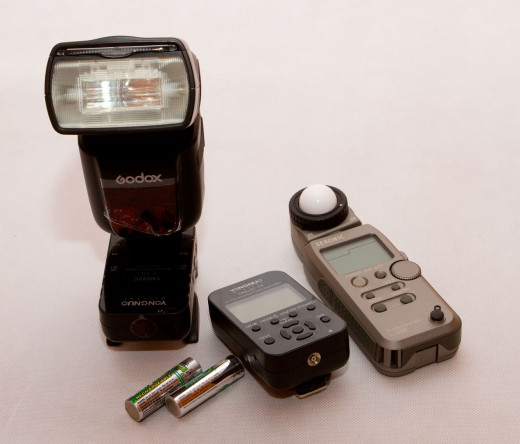The basics of flash photography for newbies

When I first started out in flash photography I found the whole thing quite daunting, and after a lot of reading I soon discovered I was not alone. Beginners and people who don’t really know how to use a flash often end up with harshly lit photos where the subjects often have the “rabbit in the head lights” look, which doesn’t make a good picture, and not really knowing how to solve these issues it is easy to see how people easily get discouraged using flash photography.
I admit that I struggled with flash photography for a while, but thanks to my stubbornness I refused to give up and soldiered on with a view to breaking the method. I spent a considerable amount of time reading, taking test shots, reading some more, taking some more photos etc. and wasn’t really getting anywhere fast until one day I read an article and the penny dropped.
Put simply, flash photography is making two exposures in one. That’s right, when taking a photograph using a flash gun you are effectively taking two photographs at the same time in a single shot. The first exposure is the ambient exposure, where you are recording the ambient light and the second exposure is the flash exposure.
Once I got my head around the above, and methodically followed the steps to take photographs using my flash gun I soon found the quality of my photographs taken using a flash significantly increased. There are of course many other things to consider in flash photography however the above is the underpinning concept you have to understand and have to master in order to capture great flash photographs.
Exposure 1 – the ambient
I always use my camera in full manual exposure mode, i.e. where I set the aperture and the shutter speed, however you can of course use aperture priority or shutter priority modes to set the exposure for the ambient light.
To expose for the ambient light ensure the flash is turned off, point the camera lens at the brightest part of the background, or the part of the background you want to correctly disclose if you don’t mind blowing the highlights, and adjust the aperture or the shutter speed until the exposure needle rests in the middle of the view finder.
Once you have worked out what the settings are to correctly expose the background you have two choices. Firstly, you can leave the settings as they are, and secondly you can intentionally underexpose or overexpose the background to suit.
Whether to over expose the background or under expose the background depends on the look you are going for and the type of image you want to capture. Whilst I do over and under expose the background I generally find I under expose the background more, to make it darker, and make the subject “pop”. Over exposing the background results in a more high key style of photograph which can also look really cool in the right circumstances.
With the settings dialled in to expose the ambient light the next step is to sort out the flash exposure.
Exposure 2 – Flash
Providing your flash gun has the right technology there are two ways you can set the flash exposure, and that is manually (i.e. where you take full control over the flash and adjust it manually) or use fully automatic ETTL mode.
Both manual and ETTL modes will achieve great results so it is entirely up to you to decide which exposure mode to use to capture the photograph. Some photographers use nothing but manual mode and some use nothing but ETTL flash, however I use both and the decision depends on a number of different factors.
Manual flash
If you have no intention of using ETTL flash and want to use manual flash only there are loads of cheap flash guns around and, when using some remote flash triggers, you can use any camera/flash camera combination. That’s right, with the right set of flash triggers you can shoot a Canon camera and use a Nikon flash or use a Nikon camera and Metz flash or use an Olympus camera and a Canon flash etc. etc. If you are on a really tight budget and want to get in to flash photography a manual only flash and a pair of cheap flash triggers is the best way to go about it.
Amazing value manual flash for Canon or Nikon users
ETTL flash
If you want a full ETTL flash exposure feature you need to make sure you buy an ETTL or i-TTL flash gun. These are more expensive than manual only flash guns, this shouldn’t come as a surprise given the additional technology, but the additional cost is well worth it if you have the funds to do so.
There was a time when ETTL flash guns were very expensive, however times have changed and there are now cheaper third party flash guns that are jam packed full of features and great value for money, such as the Godox Ving. I rate the Godox Ving so highly I invested in three of them, and sold my Canon 430EXii in the process. For a full review of the Godox Ving check out my article.
Awesome ETTL flash for Canon or Nikon users
Combining the exposures for the overall photo
It is the camera that combines the ambient exposure and the flash exposure, and there is nothing more you need to do. So, as long as you have exposed for the ambient light to get the effect you want (using the shutter and the aperture) and the flash (either using ETTL or manual flash) all you need to do is press the shutter button and you will get the photograph you are after.










